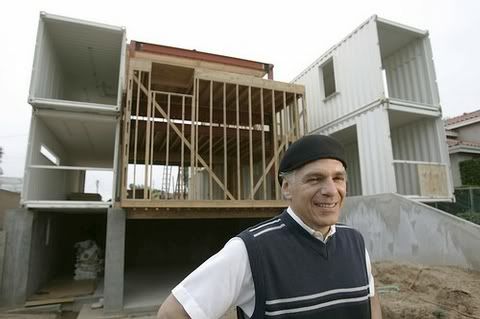Leland Advanced Member Posts:741  
| 02/08/2008 5:13 PM |
|
The policy covers trees up to $500 ea. if destroyed by fire.
The insured has other structure coverage with a limit of $10,000.00. The insured has a tree house which is bolted and nailed into a 40' tree. The tree house and tree are destroyed in a fire.
The carrier agrees that the tree house is "other structure". The insured agrees that the treehouse would cost $2800 to rebuild, not counting the tree.
Would you
a) pay for the treehouse and only $500 for the tree?
b) pay the full value of the tree and the $2800 because the tree was part of the "other structure" and the insured would not be restored to the pre loss condition if they only got enough money to build the structure to sit on the ground?
c) refuse to pay more than $500 for the tree but pay for additional framing and engineering that would allow the treehouse to be 20" up in the air, as high as it was in the tree?
d) other |
|
| 0 |
|
BobH Veteran Member Posts:759  
| 02/08/2008 8:13 PM |
|
a) pay for the treehouse and only $500 for the tree?
There's a whole lotta "hurt" in the world.
With impartial, unemotional clarity, the adjuster surgically removed the non-payable portion of the loss from the loss settlement.
Leland, as you know from your time with State Farm, they (and many of the better carriers) might consider the "amount beyond a special limt" portion of the loss as a damage resulting from a covered peril that will go toward the deductible. There was an old thread on that subject, absorbing the deductible. Sometimes that aspect can help a lot.
I am not referring to "bury" the deductible, or anything unethical. It is like a $10,000 item that is stolen, but subject to a special limit of $2,500. It's a covered loss, and the payment is $2,500 but the deductible is not taken. It is absorbed by the amount of COVERED damage beyond a special limit.
I remember a claim I had years ago where an 18 wheeler in a parking lot took out a big tree. We got estimates for big bucks to replace a full grown tree, as a 3rd party claim. Next year there was a little seedling in it's place - nobody plants a huge tree back, but it has value. Bob H
|
|
| 0 |
|
Leland Advanced Member Posts:741  
| 02/08/2008 9:05 PM |
|
|
Ok, let me play the devil's advocate (PA). Isn't the insured entitled to have a tree house? What kind of a tree house is missing the tree? Wasn't the tree functioning as part of the structure?
If you had an insured that had a couch made out of an old trunk from a 1950's car, complete with tailights, would you deny coverage as "auto parts"? (I have seen these couches in stores).
Isn't the tree house the same idea? Or not? Once you make a tree into a tree house, doesn't the tree take on the function (at least in part) of structure?
Anyway, of course you can (and should) absorb the deductible in every case where the loss exceeds the limit by the amount of the deductible.
I would probably deny coverage for the tree but I thought this was a fun question. Another example: what if barbed wire was strung between trees. If the trees were burned, would the insurance company owe to at least pay for replacement posts so the insured could have the fence restored?
I personally know a painter who has a mountain cabin. The central "pier" that supports the floor joists is actually a tree stump cut to the same height as the cripple wall. Therefore part of his foundation is actually a "tree". If his cabin burned to the ground would you pay for concrete piers to replace the function of the tree stump?
I used to be a customs broker and these kinds of questions were always coming up. When an importer brought in some lamps made from antique vases they declared them as antiques for duty free import. Customs said no, those are not antiques. They are newer lamps MADE from antique vases.
Another case I read about went to trial. Customs said the bags were not purses, which had a lower duty rate. Customs put a New York City detective on the stand as their expert witness. He expalined that women were constantly having their wallets stolen out of the bags which in his opinion were not any good as purses and shouldn't be considered purses. On cross examination by the importer's attorney he reiterated how so many women were walking around with these bags carrying their personal items. The importer's attorney pointed out that if so many women were using these bad ideas for purses as purses, weren't they then actually purses? The importer won and the judge ruled that the bags were in fact purses, because thats how people used them.
So, same idea with the tree. The tree doesn't become "other structure" when it is clearly used as a structure? Why not? The insured can argue that the tree is now part of a structure, are they wrong?
Here's another example:
Most policies do not cover animals. Would you apply that exclusion to a stuffed hunting trophy? After all, it is a (dead) animal.
I recently had a tree house burn down but the tree never became an issue because the losses were way over limits anyway. The insured did make sure to tell me how much he thought the tree was worth.
If anybody can give examples of things that might be excluded under one provision but were covered under another provision due to their USE, FUNCTION, etc. please give tell your story.
Also I comment to Bob- I have had some of those car against tree claims also. The value of a large tree is high and hard to estimate, and yes the carriers will pay for the full value of a tree if its a third party. I sometimes see people on curvy roads who get trees taken out every few years. They make claims against auto carriers over and over, always replanting new trees.
|
|
| 0 |
|
BobH Veteran Member Posts:759  
| 02/08/2008 9:34 PM |
|
Gotcha on all that - and again nice to see you at the NFIP thing.
So many things in life are negotiable. Some of this will always depend on the guy sitting at the desk who writes the checks. We make our recommendations.
What is odd to me, is that I report to so many different carriers over the years and watch them respond differently. I had one pay a water damage that had been leaking for years, another has very strict interpretation of long-term at 14 days. Some carriers are deeply concerned about customer satisfaction, and some aren't.
But on the trees, for first party, 99.9% of claims examiners would not consider a dime over the special limit. Beyond that it can help absorb the deductible, but they can't issue payment beyond that special limit. Bob H
|
|
| 0 |
|
HuskerCat Veteran Member Posts:762  
| 02/09/2008 2:31 AM |
|
Caring deeply about customer satisfaction is not a bad thing, until the provisions of the policy are stretched too far and too often, and a precedent is established. Just thinking out loud, what if it was a hammock stretched between 2 trees and they burn down. A hammock between 2 shady trees is certainly alot nicer though than if it's between 2 posts, and it is not a structure like your example. In that type of situation, there would not be any debate, I'd hope...and the presence of a treehouse shouldn't change the interpretation of limitations placed on trees. I think it was said best, when said let the carrier/check-writer decide and then live with it. It's little things like that that auditors stumble across and like to make an issue of. |
|
| 0 |
|
BobH Veteran Member Posts:759  
| 02/09/2008 10:01 AM |
|
Caring deeply about customer satisfaction is not a bad thing, until the provisions of the policy are stretched too far and too often, and a precedent is established I agree. And there are still some great carriers that try to keep the policy holder happy. Seems there used to be more of those. what if it was a hammock stretched between 2 trees and they burn down Pay up to the special limit for trees, pay for the hammock, and it's done. If the Insured was pushing for coverage on the trees, I would put together some values and as you say, let the check writer decide. But they better find a nice adolescent tree for $500 because that is all they are likely to see on a first party tree claim. 3rd party is different, the damage can run without limit. Bob H
|
|
| 0 |
|
cowboy26995 Member Posts:154  
| 02/09/2008 12:52 PM |
|
One issue that needs to be addressed as well is the value of all "other structures" on the property for as we all recall coverage limits are applied proportionately to the value of all "other structures" on the property. Any applicable deductible would easily be absorbed by the tree loss. Marc Dubois
Executive General Adjuster
M.G.D. Claim Services Inc.
"Your Commercial Claims Solution"
|
|
| 0 |
|
BobH Veteran Member Posts:759  
| 02/09/2008 12:59 PM |
|
coverage limits are applied proportionately to the value of all "other structures" on the property.
Usually 10% of the main structure limit is available for non-scheduled other structures (and of course that amount can be increased for an increased premium).
If the main dwelling is insured to value, and they exhaust the 10% available to other structures, then that is all they will receive. In that scenario I have not seen a co-insurance penalty applied, or any proportional adjustment. Pay the loss up to the limit for other structures. I have had many claims where the main house was insured to value, and the other structures were grossly underinsured. It's common. But there isn't a penalty for it until you simply run out of money and the 10% limit is gone.
Some Farm and Commercial policies will allow zero for non-scheduled structures, but that's different.
I have worked commercial claims for car dealerships where you count the inventory and pay percentages based on current value... but that wouldn't be a tree claim scenario. Bob H
|
|
| 0 |
|
Ray Hall Senior Member Posts:2443  
| 02/09/2008 1:07 PM |
|
Auto hits large tree fights will always be around on 3rd party liability claims. In 04 I worked the West Palm Beach loss on the Zoo and it was a zoo. Saw something I had never seen before many palm and ficus trees were blown over with the large root ball exposed. A large tree company cut most of the canopy limbs back by about 1/3 used a square spreader bar with a 150 ton rubber tire crane with a zillion web slings and set the trees back up and they all lived and seem to flourish from the "root stimulation". No tree coverage and all this was on their dime. My tall 4 in 4 story. |
|
| 0 |
|
BobH Veteran Member Posts:759  
| 02/09/2008 1:17 PM |
|
No tree coverage and all this was on their dime.
A great example of how people become more "Reasonable" when it is their money that is on the line. If those trees were blown over because of an explosion at your chemical plant next to the zoo, I'm sure the same owner would be asserting they were a total loss. Bob H
|
|
| 0 |
|
Leland Advanced Member Posts:741  
| 02/09/2008 2:09 PM |
|
|
Here's an example of a tree house that could easily go over the other structure limits:
http://www.barbarabutler.com/upload/Photo4214d18e92a43treehouse.jpg
Tree houses are actually becoming more popular all the time.
Let's say the tree house was approved by the city building department, which relied on plans from a structural engineer that showed the trees as structural elements, along with engineering calculations using the strength of the trees to determine structural integrity. Later, the carrier did a full underwriting, with photos etc. The treehouse was separetly scheduled as a "treehouse". Would these additional facts change your opinion on coverage for the trees?
What if the trees were dead? Would that affect your decision?
Nobody answered my question about the tree stump being used as a structural pier. One factor in the stump question is that the stump in the example might still be considered a tree, but it is not an "outdoor tree" like the policy says.
Which brings me to my next question:
I grew up in an Eichler home built in the early 1960's. These were very innovative modern designs, and our home had an atrium enclosed on 4 sides but open to the sky above. We had a huge fig tree planted in the center of the atrium. Here's a photo of a different Eichler atrium with a smaller tree inside:
http://www.eichlernetwork.com/images/housedoc/land1_b.jpg
So if a tree like this was burned up in a fire, would you cover it for full value or apply the $500 limit? After all, it can it be considered an "outdoor tree"? The atrium is really indoors, just open to the sky.
On a side note I want to thank everybody for not slamming me for posting a "silly" question. I think these kinds of questions can help sharpen our analytical skills for better adjusting.
Here's one to challenge the most hard nosed adjuster. Would you deny coverage on this if it was covered under a building policy:
http://www.conniesurvivors.com/pictures/CF-RNR-16Feb05-3.jpg
Leland
|
|
| 0 |
|
BobH Veteran Member Posts:759  
| 02/09/2008 2:21 PM |
|
Here's one to challenge the most hard nosed adjuster. Would you deny coverage on this if it was covered under a building policy:
If the agent wrote the thing up, and it was the scheduled property, I'm OK with it. The intended use is no longer to fly, like your car parts made into a couch - It is no longer a "car".

On the stump used as a foundation member - well that's just kind of a bad idea on the part of the architect... better make sure it doesn't start growing or decaying. I would bid to R&R the damaged footing, and put back something of the same functional value. I would not "deny" that part of the building because it used to be a tree, if in fact the building was supported by it. Some betterment may apply...
On the tree house thing, I still look at the "improvements" as separate from the tree. If the agent and Insured are working together to make sure his ass is covered in the event of a total burn-down, maybe they can schedule the thing or work out a solution BEFORE the claim.
If I get that after the fact, and it is a standard ISO form, he is gonna get the tree limit + cost of improvements. And the fact that he can't put it back just like it was is really no concern, it can't sway my judgment in that example. It's not like "increased dwelling limit to ensure replacement" for the main house. It's a freak'in tree in the yard, and if the guy has that much money to build an elaborate structure in the tree, then my number on the check arriving to his mailbox is not going to impact his quality of life.

We saw people without a home at Katrina and no ALE with the flood policy - and we would like to have done more but the policy has it's coverage and that's all she wrote. Same with the living tree out in the yard, and I would apply the same logic to a tree in an atrium that was exposed to direct rain from the outdoors, regardless of wall positioning around it. Bob H
|
|
| 0 |
|
BobH Veteran Member Posts:759  
| 02/09/2008 2:34 PM |
|
So if a tree like this was burned up in a fire, would you cover it for full value or apply the $500 limit? After all, it can it be considered an "outdoor tree"? The atrium is really indoors, just open to the sky.
It's open to the sky.
Now sir, I am gonna be nice and not name the mortgage company on this $500 check for your tree, and again want to remind you that we have not taken a deductible for this loss due to the amount of value beyond the $500.
 Bob H
|
|
| 0 |
|
Leland Advanced Member Posts:741  
| 02/09/2008 3:06 PM |
|
|
Ok here's another issue that was presented by the guvment at the NFIP seminar, but they blipped through the slides real quick.
Every year they show us pictures of travel trailers that are suspended on piers up in the air and tell us that these can be covered. But this year I also saw a picture of an ocean freight container which was quickly dismissed as not being covered even though it had a door cut into it.
Buildings made from ocean containers are becoming more and more common, a lot of it has to do with our trade imbalance (it is more efficient financially to abandon it here in the US than to send it back empty overseas)
San Diego county has issued rules regarding the painting, hiding, and positioning of containers because they are so common.
Here's an example of a building that uses recycled containers:
http://i81.photobucket.com/albums/j240/Gumsandals/ShippingContainerPeterDeMaria.jpg
Clearly these containers are part of the structure.
These containers, however, would (in my opinion) be personal property if they were just set on the ground with no foundation.
http://www.combatreform2.com/container.jpg
I thought the issue was supposed to be the existence or lack of a foundation, not simply the fact it was made from a container. Bob - did you notice this at the NFIP seminar?
(I took the second photo from a huge article on the use of containers in modernising military housing:
http://images.google.com/imgres?imgurl=http://www.combatreform2.com/container.jpg&imgrefurl=http://www.combatreform2.com/battleboxes.htm&h=252&w=240&sz=12&hl=en&start=33&um=1&tbnid=FCLJ5KVfE2Nq-M:&tbnh=111&tbnw=106&prev=/images%3Fq%3Docean%2Bcontainer%2Bstora )
|
|
| 0 |
|
BobH Veteran Member Posts:759  
| 02/09/2008 3:16 PM |
|
I thought the issue was supposed to be the existence or lack of a foundation, not simply the fact it was made from a container. Bob - did you notice this at the NFIP seminar?
Yeah, they didn't want to see tires and axles under the thing, has to have permanent foundation. If someone went to the effort to make a very permanent foundation, I think an argument could be made for coverage.
Building
A structure with two or more outside rigid walls and a fully secured roof, that is affixed to a permanent site; or A manufactured home (also known as a mobile home is a structure built on a permanent chassis, transported to its site in one or more sections, and affixed to a permanent foundation); or A travel trailer without wheels, built on a chassis and affixed to a permanent foundation, that is regulated under the community's floodplain management and building ordinances and laws. Building does not mean a gas or liquid storage tank or a recreational vehicle, park trailer or other similar vehicle except as described above.
http://nfipnextgen.com/acronym.htm
re: Your link above... I wonder if he will still be smiling when that hot San Diego sun cooks the tenant out of the tin can on the 4th of July

Bob H
|
|
| 0 |
|
Leland Advanced Member Posts:741  
| 02/09/2008 3:34 PM |
|
|
Bob- they showed pictures of trailers with wheels and clearly stated that they would be buildings because they were up on permanent stilts.(affixed to permanent site) They also showed pictures of trailers with wheels on the ground and said they could also be considered buildings if the local authorities overrode NFIP rules.
You must have been sleeping during that part- wheels on the trailer does not automatically exclude the trailer from being considered a building. I am going to have to ask you to turn back in 1/2 hour of your CE credit. By the way the airplane above has wheels but I beleive it would be a building under NFIP because it is permanently attached to the site.
Thanks for posting the building definition. What I saw was the presenter flashing a picture of a storage container with a door cut into it and then stating that it wasn't covered because it was clearly a storage container. Based on the definition you posted the answer actually depends on whether it is affixed to a permanent site, not what it is made of.
|
|
| 0 |
|
Ray Hall Senior Member Posts:2443  
| 02/09/2008 3:41 PM |
|
Keep the weekend lively Bob, An Inland Marine policy could be written on a tree house for all risk, but not an HO-3 my opine. On the inside atrim the plants would be UPP . Another question if fallout from rain gets into the house is it, surface water or a flood are both or neither????? hmmmm |
|
| 0 |
|
BobH Veteran Member Posts:759  
| 02/09/2008 3:48 PM |
|
I hear ya Ray. I think Leland is working fire claims - imagine if that tree was blown over by wind, and didn't hit the building or any other covered property. I agree that the HO-3 wouldn't pay for the tree, it's not all risk for trees. Bizarre thread. Maybe it would be covered if it damaged the structure that was falling down with the tree... but that's not the intent of the policy.
On the inside atrim the plants would be UPP In Leland's link the tree in the atrium has roots in the dirt on grade, exposed to the elements. If it was in a movable planter then I would agree with Personal Property. Leleand are you talking about a plant living in the soil that is exposed to natural rainfall? (that's my impression)
they showed pictures of trailers with wheels and clearly stated that they would be buildings because they were up on permanent stilts.
Yeah, I remember that now. You are right. The point is the permanent foundation.
That flood policy is the strangest collection of wrinkles, written by a committee of bureaucrats. They cover refrigerator as a "building" item coverage "A", same with blinds but zero coverage for other window treatment, has to be blinds... Bob H
|
|
| 0 |
|
Leland Advanced Member Posts:741  
| 02/09/2008 3:51 PM |
|
|
Ray brings up a great question, especially since traditional atriums (not Eichlers) are DESIGNED to direct water to an interior "room" that is open to the sky. They often have roofs that slope in to the center rather than outward.
|
|
| 0 |
|
Tom TollModerator & Life Member  Senior Member Posts:1865  
| 02/11/2008 5:23 AM |
|
The tree would not be an acceptable foundation, by code. We therefore owe policy limit on the tree ($500.00) and the amount to replace the tree house structure, as in the other structure coverage. Removal of the tree house debris would also be covered, but not of the tree debris or remnants. Success is not final, failure is not fatal: it is the courage to continue that counts.
|
|
| 0 |
|